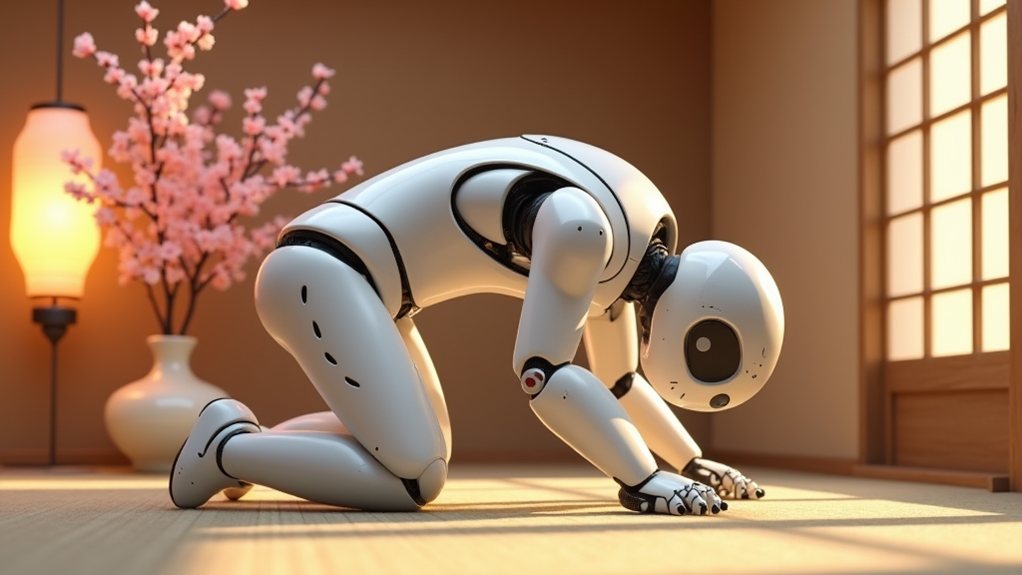As robots increasingly populate Japan‘s homes and businesses, they’re learning to bow, speak softly, and wait their turn—just like their human counterparts. Avatarin, a spin-off from airline giant ANA, believes polite robots aren’t just possible—they’re necessary for widespread adoption in Japan’s politeness-obsessed society.
The marriage of kawaii (cuteness) and advanced technology isn’t accidental. It’s deeply rooted in Japanese cultural values. While Western societies often view robots as tools, Japan’s Shinto traditions allow for a more spiritual connection with machines. They’re potential friends, not just gadgets. The integration of adaptive learning systems helps robots better understand and respond to human behaviors and preferences.
This explains why Japanese engineers don’t just build functional robots—they create companions. Take AIBO, Sony’s robotic dog. It doesn’t just fetch; it forms emotional bonds with owners. Asimo can help around the house. Kirobo went to space. These aren’t cold machines. They’re cuddly assistants with manners.
Japan’s aging population creates urgent demand for these polite helpers. Elderly care facilities need robots that don’t just perform tasks but do so respectfully. These service robots are specifically designed to assist elderly individuals with medication reminders and physically demanding tasks. No one wants a rude caregiver, even a mechanical one.
Research shows humans respond better to polite machines. We trust them more. We listen to them more. A robot that says “Would you mind taking your medication?” works better than one barking “Take your pills now!” Who knew?
Humanoid robots especially benefit from programmed politeness. Their human-like appearance creates expectations of human-like behavior. User expectations of politeness in human-robot interaction are heavily influenced by robots’ appearance and how well it aligns with their capabilities. A robot that looks like a person but acts like a vending machine? Creepy.
Ethical questions remain, though. How persuasive should these polite robots be? When does helpful become manipulative? Regulatory frameworks haven’t caught up with the technology.
Cultural differences complicate matters further. Japanese politeness differs from Swedish politeness. What’s respectful in Tokyo might seem distant in Stockholm. Global deployment demands cultural adaptability.
One thing’s certain: tomorrow’s robots won’t just be smarter—they’ll be nicer too. And they’ll definitely say “arigato” after helping you.









